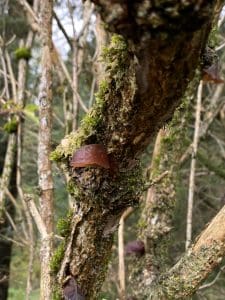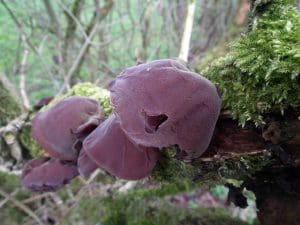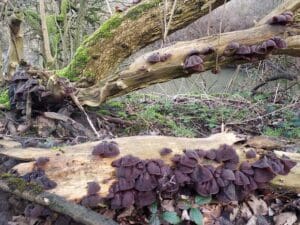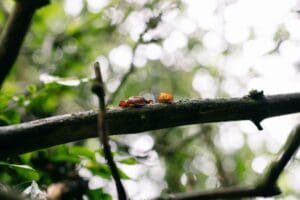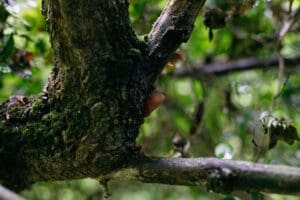Jelly Ear Mushroom / All Year Round / Edible
Jelly Ear Mushrooms are a delightful edible mushroom and although they can be found all year, early spring is when they’re most prolific.
Scientific Name
Auricularia auricula-judae
Common names
Jelly Ears, Wood Ears
Family
Auriculariaceae
Jelly Ear Mushroom Foraging Video
Habitat
Widespread throughout temperate and sub-tropical zones globally
On dead or dying broadleaf wood, in particular, Elder.
Click here to see our Identify Elder guide
Description
Identifying Features
Fruiting body
Brown and very much resembling a human ear in look and texture. Its cup hangs down towards the ground. In dry weather, it shrivels to a fraction of its hydrate size and becomes almost black. It re-hydrates after rain.
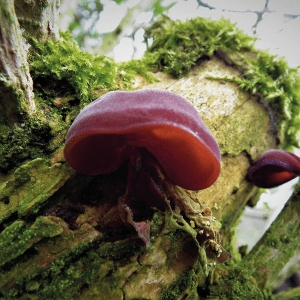
Smell
Not distinctive
Spores
White
Uses
Edible use
Jell Ear’s ability to dehydrate and rehydrate means it is excellent for long-term storage. It can be rehydrated in strong-flavoured sauces and will take up those flavours. Its texture lends itself towards oriental cuisine, however, soaked in strong fruit juice and covered in chocolate, it makes an interesting confectionery.
Avoid frying in oil as it will explode!
Another way to enjoy this is in something called a wood ear salad, soy sauce, sesame seed oil, chicken stock & light salad greens – it’s beautiful.
Any recipes that calls for the cultivated wood ear mushroom can be made using jelly ear mushrooms 🙂
Here’s a link to some nice wood ear mushroom recipes

Medicinal Uses
An acidic polysaccharide (containing mannose, glucose, glucuronic acid and xylose) within the mushroom has been found to have some effect on reducing blood coagulation. Research is continuing into its use as an antithrombotic
Known hazards
Should be avoided by those with haemophilia or taking blood thinners
Could be confused with
Other cup fungus although the Jelly/Wood Ear always has its “cup” hanging down. Other cup fungus have an upright cup
Extra Notes
There is a belief that Judas Iscariot hung himself on an elder after betraying Jesus Christ. The ears are a sign of his tormented spirit being trapped in the tree. However, the elder is a very weak tree and unable to support the weight of a human adult.
Auricularia and auricula are both derived from the Latin word for “ear”. Judae means Judas, the disciple who is named as betraying Jesus Christ in the Christian Bible – see folklore.



